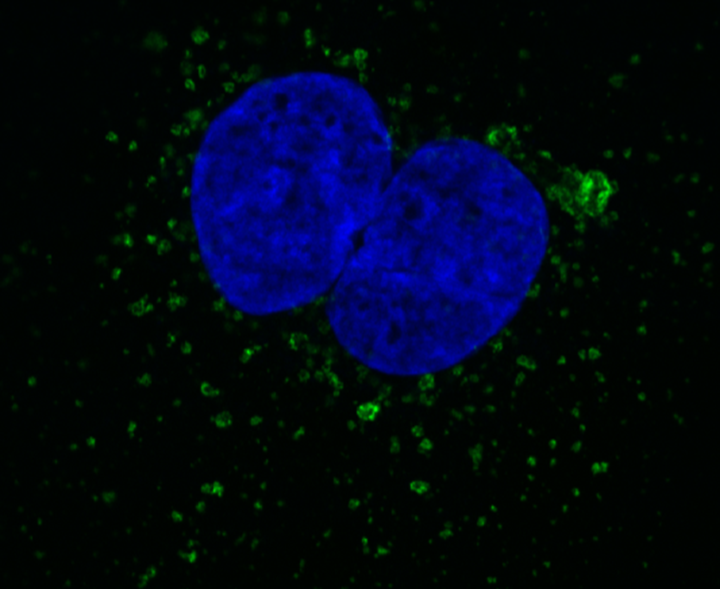Your cells are fantastic living machines that are capable of producing lipids, proteins and sugars. We learn how things are built in the cell, but we learn very little about how things are degraded. You see, ever so often, the occasional protein gets misfolded and even the mighty mitochondrion gets damaged. Cells need a way to get rid of their trash. Do they just spit them out of the cell? No, cells recycle!
Cellular «trash» can be discarded by two distinct mechanisms so that precious materials can be recovered and turned into something useful. One process is called autophagy, and if what you have been reading so far sounds like Greek to you, then you are absolutely right and you probably know some Greek. «Auto»-«phage» is a combination of two Greek words that mean «self»-«engulfing».
During autophagy, a membrane inside the cell wraps around the trash and brings it to cellular recycling stations, called lysosomes, to be degraded. However this process extends beyond just waste management. Autophagy is a quality control system to make sure that only healthy organelles are in the cell, it helps the cell adapt to starvation by breaking down parts of itself to free up materials that the cell can use for something else. Stem cells need it for differentiation and infecting pathogens are broken down by autophagy. It is no doubt an important process to the cell, but what happens when it doesn’t work like it should?
Dysregulated autophagy contributes to an array of different diseases, such as neurological diseases, obesity, and cancer. The curious scientist in you may now be wondering, what does recycling in the cell have anything to do with disease? Just like how trash left in the middle of a hallway may cause someone to slip on a banana peel and cause a stink, trash inside the cell can also cause problems. Unless cells remove damaged mitochondria, they might release harmful molecules called ROS that alter proteins and DNA, which could contribute to serious diseases, like cancer.
Most people know someone who has had or is living with cancer, and 1/3 of the population today will eventually develop cancer within their lifetime. Autophagy is something often described as a double-edged sword in cancer. Autophagy prevents cancer development by protecting normal cells from damage, while the same process promotes cancer progression by allowing cancer cell survival. However, there is no such thing as “always” in biology, and the role that autophagy plays in cancer is context dependent.
Cancer cells often develop resistance towards the drugs and this resistance is, in part, mediated by autophagy. Multiple studies have shown that breast cancer and prostate cancer cells rely on a functional autophagy machinery to develop resistance. Treatment effect strongly increased when researchers simultaneously inhibited or activated autophagy and treating cancer cells with chemotherapeutic drugs. The results from these studies give an optimistic outlook for the future of cancer treatment. There are about 50 ongoing clinical trials that manipulate autophagy to improve treatment success.
In the Simonsen lab, we are learning more about the autophagy process and how it is involved in diseases using a wide range of methods. My favorite method is microscopy (Pic), and you might probably see why. Autophagy vesicles look like stars in the dark night sky!
An ancient philosopher once said if you know the enemy, you need not fear the result of a hundred battles. We believe that a better understanding of the basic mechanisms of how the cell recycles opens up new avenues that we can manipulate for the benefit of cancer treatment.
As for the empty recycled milk carton from the first paragraph, it probably gets turned into something useful. Maybe a glossy magazine at the doctor’s office or the next milk carton you buy.



.jpg?alt=listing)

